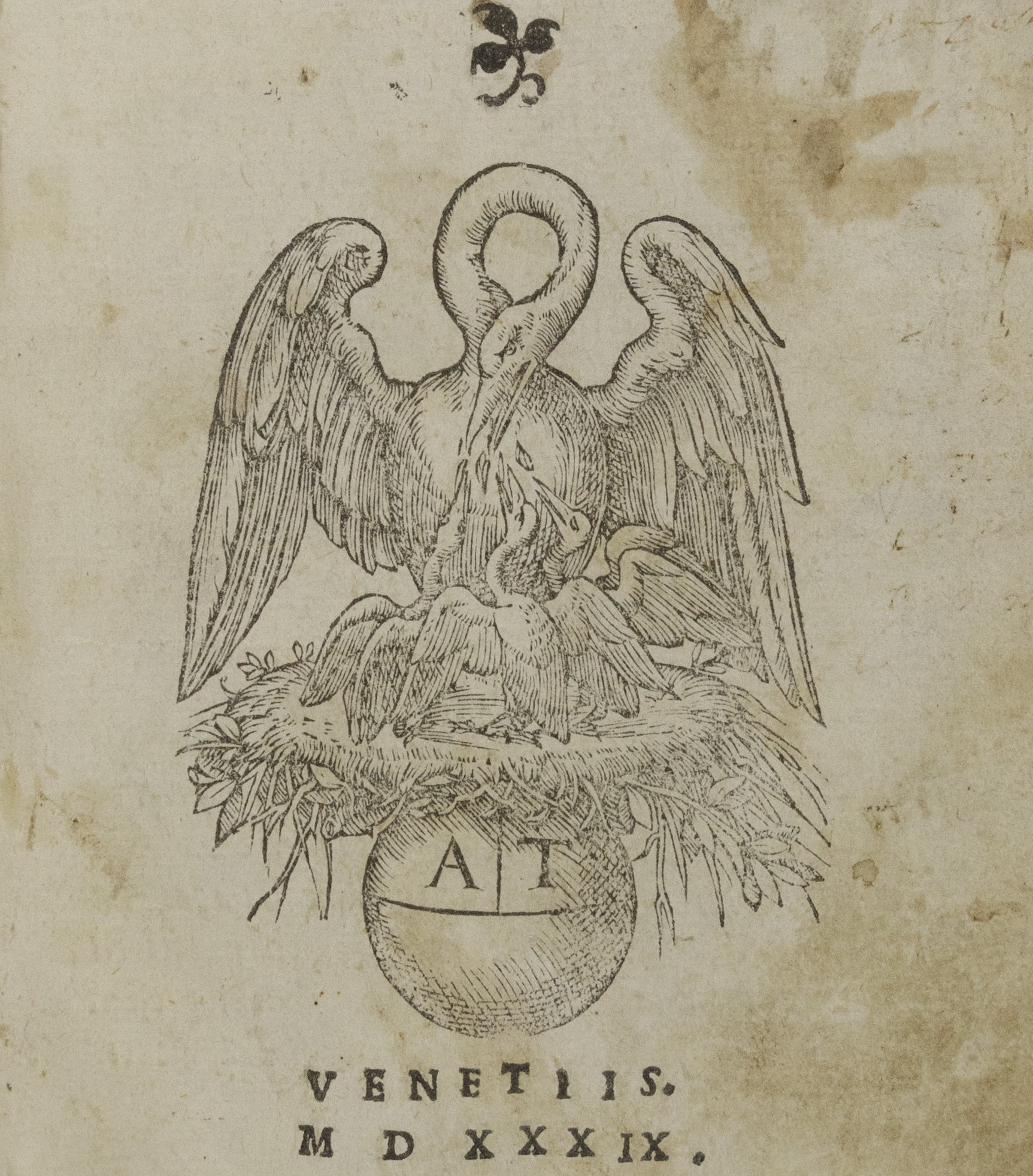Introduction
What is humanism? Humanism is not a formal philosophy, although it is often mistaken for one. It is better to think of humanism as a kind of literary movement, or a method for interpreting texts. Historian Margaret King says that humanism “… was more like a way of life. It involved a commitment to the world of ideas guided by the classics, which were to be read in the original Latin (more rarely, Greek), mastered, imitated, and to some extent enacted, in communities that gathered in schools and homes and shared public spaces” (King, Renaissance Humanism: An Anthology of Sources, ix). Humanists were people who read and interacted with the classical tradition in the period in European history known as the Renaissance.
The first humanists were Italian scholars who traveled to monasteries and other houses of knowledge around the peninsula and searched for the oldest Latin and Greek manuscripts that they could find. They looked for unannotated, untranslated documents that preserved the original, authentic form of the texts from the ancient world. Medieval monks performed integral work in terms of copying and thus preserving ancient manuscripts after the power of Rome diminished. Without the transcriptions, translations, and intellectual exchange of Jewish, Christian, and Muslim scholars in the Middle Ages, ancient sources would have been lost in Western Europe. However, the humanists of the fourteenth century viewed those copies as very often poor in quality. Humanists did not want to read a manuscript by Cicero, an ancient Roman orator, that had been copied and recopied dozens of times, and they were also uninterested in the many annotations and notes that medieval authors had added over the years.
As early humanists dug around in the dark corners of libraries around Europe, they wrote to other like-minded scholars and told them about their finds, sharing the new copies they made. The scholars exchanging documents that fascinated and excited them called this network a “republic of letters” (respublica litterarum in Latin). Combined with the advent of the printing press c. 1450, the humanist enterprise meant that almost all of the available classical works in Greek and Latin were published in Italy and disseminated to the rest of Europe by the beginning of the sixteenth century.
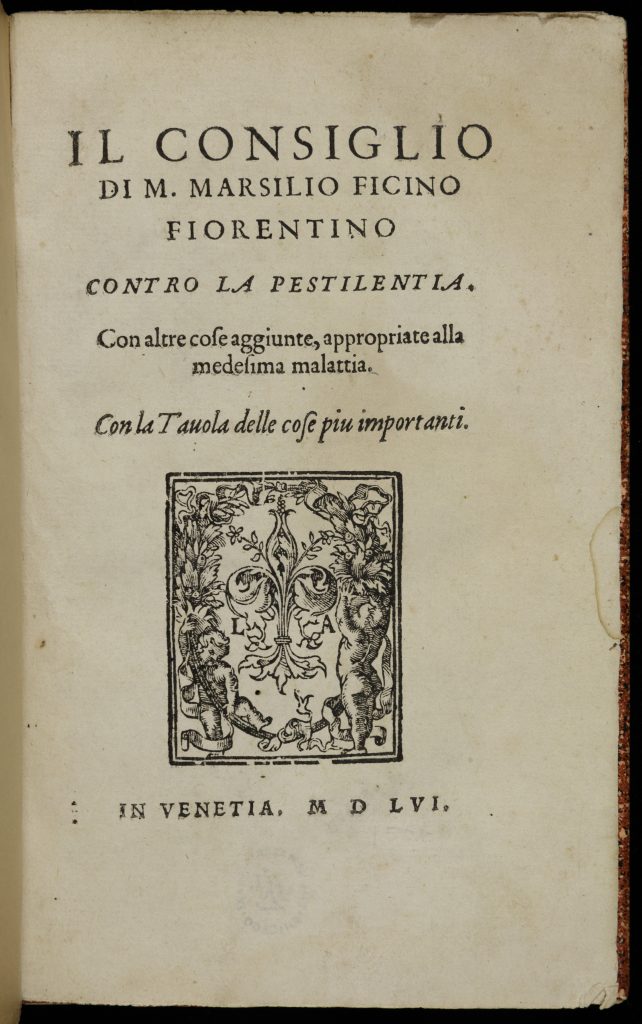
All of this discovering and transcribing of original Greek and Latin texts made humanists very aware of how long ago those texts had been written. They began to put those texts into historical context. For example, a famous story about humanist Francesco Petrarca, or Petrarch, describes him writing a letter to Cicero. Petrarch admired Cicero very much, and in the letter he praises Cicero for his great rhetoric. But Petrarch also chastises his hero; he says that Cicero should have known better and stayed out of politics, and that if he had done so he would not have been assassinated.
Petrarch’s letter to Cicero shows us that humanism, as a literary method, led to a strong conception of different time periods — a better sense of history — as well as an understanding of the fact that language, like everything else, has a history. The humanists recognized that the texts they were reading had been written a long time ago, by people who had different concerns and different values than perhaps the humanists did in their own time. It also became clear to them that the meanings of words and phrases often changed over time, and that those changes in meaning needed to be considered and accounted for in any translations.
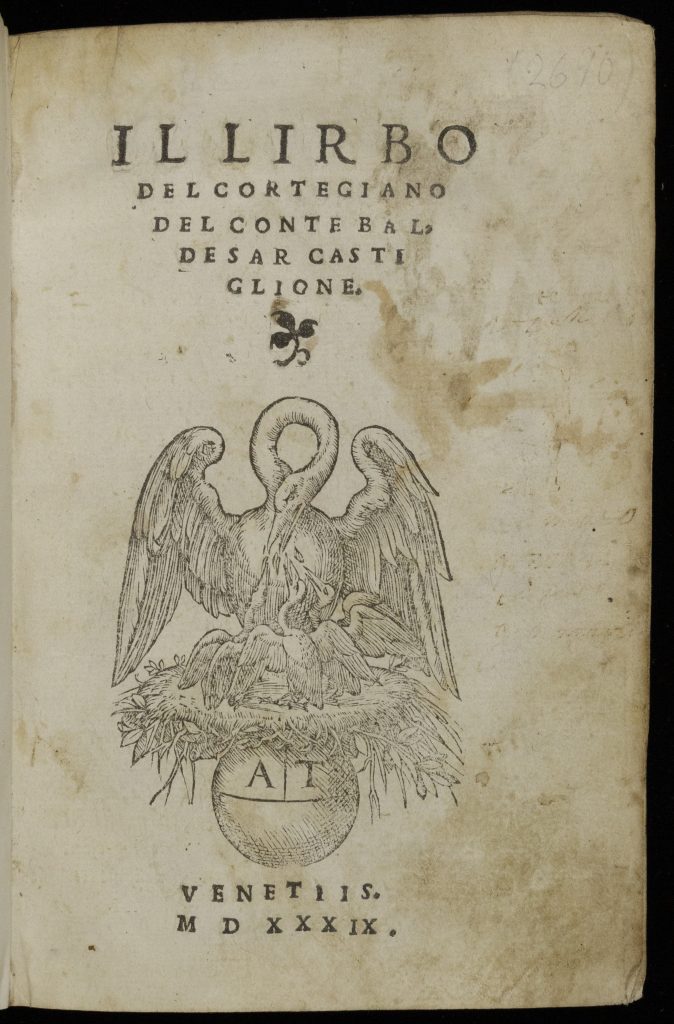
Historians credit humanism with beginning some of the basics of textual analysis and criticism that we still value today, because humanists understood knowledge in the context of when it was recorded and therefore not always as objective truth. Humanism by its nature often encouraged questioning authority. Digging deeply into sources of knowledge — especially those from a different time period, in a different language — increases the likelihood that you will discover a mistranslation, or something previously not understood, or something new altogether. As more and more people read and studied the works of Aristotle, or Cicero, or Ptolemy, it became clear that the ancient wisdom that had been taken as truth for many centuries was sometimes insufficient or downright wrong, especially as early modern Europeans began to cross the Atlantic Ocean and make new scientific observations.
The documents below from the Newberry Library give a small sample of the different ways in which humanism, as a method of interacting with ancient texts, played a role in shaping several aspects of the early modern world, and also generated an intellectual legacy that we are still familiar with and indebted to today.
Essential Questions:
- What did the humanists value? How do we know? What can we learn about premodern Europe by studying the humanists and the Renaissance?
- What kinds of problems did the humanists think they could solve by rediscovering and analyzing ancient wisdom in its original forms? Why?
- How could encountering a version of your own culture from a different time period change how you view the world you live in?
Humanism in Action
Humanists valued practical knowledge which could be put to use in the world. This was especially true in terms of civics and politics. Part of this emphasis stems from the birthplace of the Renaissance itself: the Italian peninsula and its city-states. A city-state is a city that rules over its surrounding territories, thus forming an independent sovereign state. City-states were unstable democracies with dynamic political and social arenas; they were constantly fighting with each other and trying to seize new territory in the countryside. They were also built amongst and on top of ancient Roman ruins. As dedicated students of the ancient world, the humanists had a vested interest in attempting to emulate the successes of the Romans (and Greeks) when it came to civic life, and also in avoiding their pitfalls. Those ruins were a very physical set of examples of what and what not to do. While the Romans constructed amazing buildings like the Colosseum and enduring structures like roads and aqueducts, those ruined monuments were also the remnants of a civilization which had in many ways come to an end.
“Humanism” is where the term “the humanities” comes from; new humanist curricula began to take shape in the early fifteenth century with studies in Latin and Greek, but eventually also grammar, rhetoric, poetry, history, and moral philosophy. This was the so-called studia humanitatis, or the “studies of humanity.” Subjects taught by the humanists were the precursors of our own liberal arts curricula today, and the arguments made for the benefits of that kind of education have not changed very much over the last few centuries. Advocates of the humanities believe that a young person educated in the liberal arts is able to think creatively because of their broad training, and is therefore well-equipped to do lots of different things. City-states were urban environments that fostered competition and freedom and had a lot of wealth. The wealthy merchants and nobles who made up the halls of power had plenty of money to spend on hiring humanists not only to educate their sons, but also to put humanist rhetorical skills to use to further their political and business interests. Humanists in the Renaissance were valued because they had mastered verbal skills and were persuasive writers, which meant that they were desirable employees for those who were in charge of city-states and kingdoms, as well as large businesses and trades.
The great families who owned property and directed politics in the Italian city-states competed amongst themselves for prestige by patronizing the greatest artists and intellectuals of their day. This also let them put their stamp on (and direct the development of) important works of art and scholarship produced and installed in their home cities. For example, the Medici are Renaissance Italy’s most famous family. Powerful bankers, they handled the accounts of the papacy and had financial offices throughout Europe. The Medici rarely held official, elected positions of power in Florence, but they dominated politics and culture in the city for three centuries by utilizing their wealth and fostering networks of patronage: they excelled in astute business alliances, fixing elections, and handing out bribes.
This document is a letter written in Florence by Lorenzo de’ Medici to the Duke of Milan, Gian Galeazzo Sforza, on January 8, 1485. It is signed by Lorenzo, though it was written on his behalf by a scribe or notary. Lorenzo was known as “the Magnificent,” and he exercised the power his family had over Florence in an open, princely manner. In addition to his political dealings in Italy and abroad (e.g., his correspondence here with Milan’s ruling family, the Sforza), Lorenzo continued the Medici tradition (begun by his grandfather, Cosimo de’ Medici) of acting as generous benefactors to some of the era’s most famous artists, including Michelangelo, Botticelli, and Leonardo da Vinci. Lorenzo also employed and used the services of many men who were educated in the humanist way — with a focus on rhetoric, grammar, and history — because such individuals were best suited to helping a ruler in the administration of their domain.
Lorenzo begins his letter with greetings to Gian Galeazzo, and goes on to discuss the difficulties he has had in getting this letter to Milan, as messages from Rome and Naples are currently being intercepted by enemy forces. Lorenzo deems this an outrageous state of affairs, given that such dispatches are supposed be protected under a safe passage agreement. He tells Sforza that from now on, dispatch riders will take a more roundabout way, and that hopefully “if any diligence is used” they and their messages will arrive safely.
Questions to Consider:
- Based on the kind of information that Lorenzo offers to Sforza in this letter, what are some reasons why the rulers of two city-states would write to each other?
- What kinds of concerns seem to be at play here?
- What can you notice about the ways in which the letter was written? Why would it be important to make sure that the letter was written in a comprehensible and legible way?
Humanism and Philosophy
Marsilio Ficino was a fifteenth-century humanist, philosopher, and priest, and took it upon himself to translate all of Plato’s works into Latin from the ancient Greek. Ficino was chiefly responsible for reintroducing Plato’s concepts into mainstream European thought. He was also the head of the “Platonic Academy” in Florence, an informal discussion group of thinkers who were sponsored by Cosimo de’ Medici (and later Lorenzo de’ Medici, who was tutored by Ficino). The Academy met at one of the Medici villas outside the city, where they spoke about Platonic concepts of love and the immortality of the soul. Ficino’s friends, who were invited to speak at the villa, were all among the leading Italian intellectuals of the day.
Selection: Marsilio Ficino, Il consiglio di M. Marsilio Ficino fiorentino contro la pestilentia [Marsilio Ficino of Florence’s Advice Against the Plague], title page, folio 3r (1556).
The images here are from a 1556 edition of Ficino’s Il consiglio di M. Marsilio Ficino fiorentino contro la pestilentia, or Marsilio Ficino of Florence’s Advice Against the Plague. The title page notes that there are “other additions” to the book “which are appropriate to the same malady” and that the text also has “a table of the most important things” (a.k.a. its Table of Contents). In his introductory paragraph, which here features a historiated initial “L” (a large, illustrated first letter used for decorative purposes), Ficino says that he has been moved to write this book of advice due to the “reversed charity” of his homeland during this time of plague. He hopes that “every Tuscan person” will make use of the book in order to medicate themselves, and that he has written it in the vernacular Tuscan (Italian) for that purpose. Chapters V and VI deal with “How to conserve yourself from the plague” through behavior and by medical means. In these sections, Ficino cites advice from ancient authors such as Ibn Sina (Avicenna), Galen, and Ibn Rushd (Averroes). He details their recommendations for preventative measures (such as “carrying in one’s hand very fragrant apples, cedars, lemons, oranges, etcetera, in order to smell them” and that it is wise to “often wash the mouth, face, and hands with vinegar, and sometimes with very potent wine […]”) and medicinal recipes (lists of ingredients for remedies, purgatories, and pills) for the benefit of his modern readers.
Questions to Consider:
- Why do you think a philosopher like Ficino would bother to write about the plague? What role — if any — does humanism play in that?
- In the middle of the first paragraph, Ficino writes that the advice given in this book is “approved with much reasoning, all of the authority of doctors ancient and modern.” What does that mean, and why is it important? Who was the intended audience for this book?
- At the end of the paragraph, he writes that “we pray to God, giver of life and revealer of true and healthy medicines, that he reveal to us sufficient remedies against the plague, and conserve us in his gift of health, to his praise and glory.” What does this excerpt suggest to you about how the humanists viewed the world?
Civic Humanists
The city was very important to humanists and their works. The earliest humanists were educated men who were employed by the governments of Italian city-states to draft all official correspondence, record state decisions, and generally help the city bureaucracy run smoothly through the use of well-written documents. These could include highly literate public affairs professionals like notaries. Humanists were often hired to write histories of cities, as well as panegyrics (long odes about the virtues of a particular city, a kind of poetic propaganda). Those humanists who focused on discussing the issues of urban life and praising republican institutions are known as “civic humanists.” Leonardo Bruni is the most famous of this group. Historian John Najemy argues that Bruni’s writings were consciously designed to affect civic behavior in his home city of Florence. Bruni wanted to inspire his fellow Florentines to safeguard and value their freedom, especially when faced with an invading force from Milan in 1402. Bruni often deliberately downplayed very real internal political divisions in Florence in order to depict its citizens as a united community fighting for republican liberty (Najemy, A History of Florence, 200-205). Najemy says this kind of fundamental unity was “wishful thinking,” but that it was the kind of wishful thinking — presented by Bruni in an eloquent rhetorical style learned from ancient orators — that could in fact have an impact on political behavior (that is, Florentines putting aside their differences in order to fight off an invading neighbor city-state like Milan). Bruni and other civic humanists believed that citizens who were personally virtuous and invested in the overall good of their city could be a powerful political force.
Leonardo Bruni began his career in Rome as a papal secretary in 1405, eventually returning to Florence and rising to the position of chancellor in 1427. In addition to his role as a state official, he was also one of the foremost scholars of his day, an expert in both Latin and Greek. Bruni studied classical manuscripts looking for ways for people to be more virtuous by learning from the accounts of classical authors. He was interested in civic education and the ethics of being a good public servant. Bruni wrote his Historia Florentina (History of the Florentine People) because he believed strongly in the importance and practical value of having a deep knowledge of the origins of a people or a city (in this case, both, because he wrote a history of the people of Florence). Bruni felt that there were essential lessons to be learned from the past; in the preface to his book, he speaks of the wisdom that history can give us, if we read it carefully.
Selection: Leonardo Bruni, Historia Florentia [History of the Florentine People], Folio 2v and 3r (February 12, 1476).
Translation of the above excerpt from Bruni, History of the Florentine People, Vol. I, Books I-IV:
It required long deliberation and many changes of mind before I decided to write about the deeds of the Florentine People, their struggles at home and abroad, their celebrated exploits in war and in peace. What attracted me was the greatness of the actions this People performed: first its various internal struggles, then its admirable exploits against its immediate neighbors, and finally, in our own time, its struggle as a great power against the all-powerful duke of Milan and the aggressive King Ladislas. Indeed, all Italy from the Alps to Apulia rang with the sound of Florentine arms, and even beyond Italy the People caused kings and vast armies to cross the Alps from France and Germany. In addition there is the conquest of Pisa, and if one considers the clash of characters, the rivalry for power, and the ultimate outcome, I think it fair to call that city another Carthage. In the final conquest and siege of Pisa, victors and vanquished alike displayed an equal tenacity, and deeds were performed that were every bit as memorable and important as those great events we read about and admire so much in antiquity. These actions seemed to me very much worthy of record and remembrance, and I thought that acquaintance with them would serve both public and private ends. For if we think men of advanced years are wiser because they have seen more of life, how much greater is the wisdom history can give us if we read it carefully! For there the deeds and decisions of many ages may be scrutinized; from its pages we may learn with ease what behavior we should imitate and avoid, while the glory won by great men, as therein recorded, inspires us to perform acts of virtue.
What held me back, however, was the labor involved in such an enterprise, and the gaps and obscurities in our knowledge of certain times, the harsh sounding names that would hardly allow of elegant treatment, and many other difficulties. Having weighed all these matters long and carefully, I came to feel that, on the whole, any plan for writing was better than silence and idleness. In starting to write, therefore, I have been aware of my own limitations and of the burdens of my task. But I hope that God will favor my enterprise and make it turn out well, since I am acting in a good cause. For if my abilities are not equal to the undertaking, He will nevertheless aid hard work and effort. Would that the men of earlier times, whatever the extent of their learning and eloquence, had recorded the events of their own day, instead of letting them pass by in silence! For if I am not mistaken, the special duty of scholars has ever been to celebrate the deeds of their own time and so to rescue them from oblivion and the power of fate – indeed, to render them hallowed and immortal. Yet I suppose that each man had his reasons for remaining silent. Some shrank from heavy labor; some lacked the ability; some applied themselves to other genres of writing. It is not hard, with some effort, to write a slim volume or a letter. History, however, requires at once a long and connected narrative, causal explanation of each particular event, and the public expression of one’s judgment about every issue. With the unending burden of the task overwhelming the pen, a history is as dangerous a thing to promise as it is hard to perform. Thus, while everyone has pursued his personal comfort or considered his reputation, the public good has been neglected and the memory of remarkable men and heroic actions has been almost wholly lost.
I have decided, therefore, to investigate and write the history of this city, not only in my own time but in earlier ages as far as memory has preserved it. The account will touch on the wider history of Italy as well, for nothing important has been done in Italy for a long time without the participation of at least some Florentines. To explain the various embassies sent out or received by this city, too, requires some notice of other nations. Before I come to the times that mainly concern me, however, I should like (following the example of certain annalists) to relate what I think is the most correct tradition concerning the city’s founding and its origins. This will involve rejecting some commonly held but mythical beliefs, and will shed light on what is to follow.
James Hankins, ed. and trans. Leonardo Bruni: History of the Florentine People, Vol. I, Books I-IV (Cambridge: Harvard University Press, 2001), 2-7.
The act of writing a history of the Florentine people was an exercise in what we now call “civic humanism” because Bruni intended his work to be edifying. The History is a work with an agenda, so we should not always take it at face value in terms of how Bruni tells Florence’s history. However, it is an extremely useful document in terms of understanding what was important to a civic humanist like Bruni at the time of its writing. The Newberry’s copy is one of the Italian translations produced by the humanist Donato Acciaiuoli, printed in Venice in 1476.
Questions to Consider:
- Bruni says here in his preface that he thought for a long time about writing this history and often changed his mind, but that he eventually decided to record “the glorious deeds of the Florentine people” because he felt that the memory of these things would be “very useful for the public and for private individuals.” Why would Bruni, as a humanist and a citizen of an Italian city-state, think that learning history was important?
- At one point in the preface, Bruni refers to history as “a public good.” What might he mean by that? Where in the text do you see evidence to support your explanation?
- Bruni ends his preface by saying that he will begin his History with the origins and founding of the city itself, and that he will dispel many “fabulous opinions” (i.e. myths) about how Florence came to be. What roles do mythic origin stories play in the history of a people or a state? Can you think of any contemporary examples? Why is it important to be aware of when a story is more myth than fact, when studying history?
How-To Humansim
Baldasarre Castiglione’s book Il Cortegiano (The Courtier) was a true bestseller in the Renaissance. The Courtier is essentially a how-to guide to being a courtier — a person of noble birth who serves and often advises a monarch at their court. Castiglione’s book was widely read, meaning it was important at the time and is therefore important to our own understanding of certain segments of Renaissance society. The Courtier was published in Italian in 1528 and reissued over one hundred times in many other languages. Along with Machiavelli’s The Prince, you could find a copy in most European libraries. Historians agree that ideas about social and gender relations put forth in The Courtier played a significant role in European culture for centuries. The title page of this edition from the Newberry tells us it was printed in Venice in 1539.
Castiglione received a humanist education, and he learned how to be a courtier by serving as one in Italian and Spanish courts. The book takes the form of a dialogue: at a grand ducal palace over the course of four nights, a group of nobles and officials debate the correct behavior for courtiers. The pages here are from Book I of The Courtier, or the first evening of the fictional discussion.
Selection: Baldassare Castigilone, Il Cortegiano [The Courtier], Title page, Folio 7v and 8r, Folio 8v and 9r, Folio 35r, Folio 45v and 46r (1539).
The characters decide that first and foremost, a courtier’s “profession” is the art of weapons and war, and so he should be physically well built, a good horseman, and never cowardly; a courtier must be able to speak and write with eloquence in vernacular Tuscan; he must be educated in the studia humanitatis in both Latin and Greek; a courtier should be a musician who can play multiple instruments, and he should also be able to draw and paint. Most importantly, the perfect courtier must be able to do all of this in a natural, effortless manner, with a “nonchalance” that hides the years of training that goes into these complex skills. If a nobleman can do these things in exactly the right ways — because being a courtier was as much about the right behaviors as it was about acquiring all the right skills — then he will be the best servant and advisor to a prince.
Translation of the above excerpt of Castiglione, “The First Book of the Courtier, to Messer Alfonso Ariosto”:
I have spent a long time wondering, my dear Alfonso, which of two things was the more difficult for me: either to refuse what you have asked of me so often and so insistently, or to do it. On the one hand, it seemed to me to be very hard to refuse anything, and especially something praiseworthy, to one whom I love dearly and by whom I feel I am very dearly loved; yet on the other hand, to embark on a project which I was uncertain of being able to finish seemed wrong to one who respects adverse criticism as much as it ought to be respected. Eventually, after a great deal of thought, I have made up my mind to find out how diligent I can be when helped by affection and the anxiety to please, which usually act as a sharp spur to all kinds of activity.
Now your request is that I should describe what, in my view, is the form of courtiership most appropriate for a gentleman living at the Courts of princes, by which he will have the knowledge and the ability to serve them in every reasonable thing, winning their favour and the praise of others. In short, you want to know what kind of man must be one who deserves the name of a perfect courtier and has no shortcomings whatsoever. Considering this request, I must say that, if I did not think it a greater fault to be judged wanting in love by you than wanting in prudence by others, I would have rejected the task, for fear of being accused of rashness by all those who know how difficult an undertaking it is to select from all the many and various customs followed at the Courts of Christendom the most perfect model and, as it were, the very flower of courtiership. For familiarity often causes the same things to be liked and disliked: and thus it sometimes happens that the customs, behaviour, ceremonies and ways of life approved of at one time period grow to be looked down on, and those which were once looked down on come to be approved. So we can see clearly enough that usage is more effective than reason in introducing new things among us and in wiping out the old. And anyone who tries to judge what is perfect in these matters often deceives himself. Being well aware of this, therefore, and of the many problems connected with the subject proposed to me, I am compelled to say something by way of excuse and to testify that what I am doing wrong (if it can be called so) you are responsible for as well, and that if I am to be blamed for it you must share the blame. After all, you must be judged to be as much at fault in imposing on me a task greater than my resources as I am in having accepted it.
But let us now begin to discuss the subject we have chosen and, if it is possible, create a courtier so perfect that the prince who is worthy of his service, even though his dominion is small, can count himself a truly great ruler. In these books we shall not follow any strict order or list a series of precepts, as is the normal practice in teaching. Instead, following many writers of the ancient world, and reviving a pleasant memory, we shall recount some discussions which once took place among men who were singularly qualified in these matters. Even though I did not take part in them in person (being in England when they were held), they were faithfully reported to me soon after my return by someone who was present, and I shall endeavour to reproduce them as accurately as my memory allows so that you may discover what was held and thought on the subject by eminent men whose judgement can always be trusted completely. Nor will it be beside the purpose, in order to continue the story in logical order, to describe the occasion of the discussions that took place.
On the slopes of the Apennines, almost in the centre of Italy towards the Adriatic, is situated, as everyone knows, the little city of Urbino. Although it is surrounded by hills which are perhaps not as agreeable as those found in many other places, none the less it has been favoured by Nature with a very rich and fertile countryside, so that as well as a salubrious atmosphere it enjoys an abundance of all the necessities of life. Among the blessings and advantages that can be claimed for it, I believe the greatest is that for a long time now it has been governed by outstanding rulers, even though in the turmoils into which Italy was plunged by war it was for a time deprived of them. Without looking any further, we can find a splendid example in Duke Federico of glorious memory, who in his day was the light of Italy. Nor are there lacking today any number of reliable witnesses to his prudence, humanity, justice, generosity and unconquerable spirit, and to his military skill, which was brilliantly attested by his many victories, his ability to capture impregnable places, his swift and decisive expeditions, his having routed many times with few troops great and formidable armies, and his never having lost a single battle. So we can fairly compare him with many famous men of the ancient world. Among his other commendable enterprises, Duke Federico built on the rugged site of Urbino a palace which many believe to be the most beautiful in all Italy; and he furnished it so well and appropriately that it seemed more like a city than a mere palace. For he adorned it not only with the usual objects, such as silver vases, wall-hangings of the richest cloth of gold, silk and other similar material, but also with countless antique statues of marble and bronze, with rare pictures, and with every kind of musical instrument; nor would he tolerate anything that was not most rare and outstanding. Then, at great cost, he collected a large number of the finest and rarest books, in Greek, Latin and Hebrew, all of which he adorned with gold and silver, believing that they were the crowning glory of his great palace.
Following, therefore, the course of Nature, and being already sixty-five years old, Duke Federico died as gloriously as he had lived, leaving as his heir his only son, a little, motherless boy of ten named Guidobaldo. And Guidobaldo seemed to inherit not only his father’s state but all his virtues as well, immediately showing in his marvellous disposition the promise of more than can be expected from a mortal man. In consequence, it was widely said that of all the wonderful things that Duke Federico had done, the greatest was to have fathered such a son. But envious of his great qualities, Fortune set herself with all her might to frustrate what had begun so nobly, with the result that before he was yet twenty years old, Duke Guido fell sick with the gout which, inflicting terrible pain, grew steadily worse and within a short span of time crippled him so badly that he could neither stand nor walk.
Castiglione, Baldesar. The Book of the Courtier, trans. George Bull (New York: Penguin Books, 1967), 39-41.
Questions to Consider:
- Why do you think Castiglione’s book was so popular?
- Can you think of any reasons why a civic humanist like Bruni might have found the ideas in Book I of The Courtier to be troubling?
- This copy of the book has some irregular additions; can you identify any of them? Why do you think the text might have been marked in this way?
Humanism and Antiquity
The humanist fascination with ancient, pre-Christian sources, practical knowledge (ideas that could be put to use in the day-to-day running of cities or the formation of political theories), as well as with what it meant to be a virtuous person, and what great deeds someone could accomplish in their lifetime, means that “Humanism” is often mistaken for a kind of secularism (a separation of church and state, a societal philosophy which does not emphasize the presence of religion). There is also a common misconception that suggests that the prevalence of humanism means that the Renaissance was an extremely secular time period. This is not true. Humanists were intent on “rediscovering” the works of ancient writers like Livy and Cicero and Aristotle, but this did not cause them to doubt or abandon the Catholic faith. In some instances, humanists certainly did offer severe critiques of the Catholic Church, but many of them did so because of their commitment to Christianity as well as their commitment to what they learned from their historical and linguistic research. For example, Lorenzo Valla, a humanist and a Catholic priest, is most famous for this type of critique in his On the Donation of Constantine. Overall, much like the medieval scholastics before them, early modern humanists were interested in reconciling ancient wisdom with Christian revelation. They believed it was the way to a better society.
This image comes from a document titled the Humanistic Miscellany, which is a collection of copies of letters, treatises, and poems in Italian and Latin from the second half of the fifteenth century. The unidentified poem depicted here is written in Italian in a humanistic “hand,” or script (handwriting). The most noticeable feature of this poem is the large ‘S’ initial: there is a white vine stem twined around it outlined in a brilliant blue, with pink and green shading in the curlicues.
Selection: Humanistic Miscellany, Folio 35v (1450-1495).
The poem is about the Virgin Mary, and the immaculate birth and the glory of Christ. It speaks of God’s eternal love, the singing of immense praise, and Mary’s beauty and goodness. There are also classical references throughout, which would have been typical of a humanist poet. For example, the author speaks of the Muses, Phoebus, and Orpheus as he describes Mary and her selection by God. The poem is a good reminder that although the humanists were invested in writing flawless Latin, discovering original manuscripts from the ancient world, and learning what they could from the Greeks and Romans in order to augment and direct their own (in this case, fifteenth-century) learning, they were also faithful Christians. Humanists very often deployed classical themes as they turned their linguistic skillsets to praising God, whom they believed was ultimately responsible for man’s ability to be virtuous.
Questions to Consider:
- Why would a poet who was also a humanist try to combine classical themes — i.e., characters and ideas from a time period before Christianity — into a poem about Mary, the mother of Jesus Christ?
- What do you notice about the physical presentation of this poem on the page, and perhaps the book overall?
- Who is the intended audience for this poem? How do you know?
Humanism and Art
Benvenuto Cellini was an artist and a goldsmith. His Due trattati, shown here, is “two treatises” – one on the “eight principal arts of goldsmithing” and the other on “the art of sculpture” particularly in marble and bronze. Cellini had many famous patrons, including the popes in Rome, the Medici dukes in Florence, and King Francis I of France. Cellini’s father was a Florentine musician and he wanted his son to become a musician as well, but after some musical training, the teenaged Benvenuto made a change and was apprenticed to a goldsmith. He studied ancient sculpture, and like other Renaissance artists, it is easy to see the classical influence on Cellini’s work.
Selection: Benvenuto Cellini, Due trattati, Title page, Sig. Rii, Folio 44v and 45r (1568).
Cellini was one of several Italian artists recruited by Francis I to help bring the best of the Renaissance to his chateau at Fontainebleau. Francis was also a patron to Leonardo da Vinci. For Duke Cosimo I de’ Medici, Cellini sculpted his Perseus with the Head of Medusa in bronze, which stands in the Piazza della Signoria (the Signoria was the governing body of the city-republic of Florence). In addition to being one of the most highly sought-after artists of the day, Cellini was notorious for his run-ins with the law on charges of murder, theft, and sodomy. He also wrote poetry (referenced on page “Sig. R ii”) and a famous autobiography. He was certainly something of a “Renaissance man,” although his propensity towards crime was not listed in Castiglione’s Courtier as a desirable skill.
Questions to Consider:
- What connections can you make between an artist like Cellini and elements of humanism, or to the humanists and their works, considered so far? Think about “the art of” making something like large-scale bronze or marble statues, or crafting items in a precious metal like gold.
- Why might a Renaissance artist write a treatise on techniques like the Due trattati, or poems, or an autobiography? Who was the intended audience for each text?
- How do the layout and other physical characteristics of Cellini’s book compare to Ficino and Castiglione’s books? What else do you notice?
Humanism and the Dignity of Man
Giovanni Pico della Mirandola was a nobleman and a humanist scholar. He studied at the University of Ferrara and then Padua and moved to Florence in 1482. Lorenzo de’ Medici would become one of Pico’s benefactors. Pico was a student of Latin, Greek, Hebrew, and Arabic, and he was very invested in trying to reconcile the two great classical philosophies of Plato and Aristotle. He drafted nine hundred theses (the Conclusiones) on philosophical harmony, basing them on ancient as well as Christian, Jewish, and Muslim sources. These theses were printed in 1486. The book’s preface, the Oration on the Dignity of Man, became Pico’s most famous work. The Oration is often read in European history courses when studying humanism: it is an eloquent defense of humanity’s capabilities and the unique place that humans occupy in God’s Creation.
Pico stated that God made human beings specifically so that there would be creatures who could marvel at the universe He had created, and that because He made humans last, humans had no assigned place in the grand scheme of the cosmos. Thus, Pico contends, God gave humans the ability to mold themselves. A human could choose to pursue only bestial things, in which case they will become like an animal. Alternatively, a human could choose reason and intellectual pursuits in order to become like the angels, or (depending on how philosophically skilled you were) ascend even higher and become divine, like God Himself. This choice means that human beings can take actions in their earthly lives which can have wide-ranging effects: this is “the dignity of man” which humankind alone possesses.
Selection: Giovanni Pico della Mirandola, Disputationes contra astrologos [T he Disputations Against Astrology], Folio 1r (August 14, 1498).
Pico’s last work was his Disputationes contra astrologos, or The Disputations Against Astrology. Pico began the Disputationes in 1492 but it was published posthumously by his nephew, Giovanni Francesco Pico della Mirandola. The Disputationes is a twelve-book treatise composed of rational, philosophical, and religious arguments against “divinatory astrology,” the art of using the stars in order to predict the future. Pico outlines the distinction between astrology and astronomy in the beginning pages of the Disputationes as a way of delineating what a human being can and cannot do as one of God’s creatures. According to Pico, astrological determinism is a violation of belief in God’s omnipotence, and also a threat to the idea of humanity’s God-given free will. Humans may track the movements of the stars and apply mathematical principles to their study. Humans may not read the future in the stars, because we cannot presume to know the sky as only God can know it.
Questions to Consider:
- What differences do you notice between this page of Pico’s Disputationes and the poem in the Humanistic Miscellany? Why do you think the books look different?
- What’s going on in the margins of the Disputationes? Can you identify/recognize any words in the marginal area or in the text itself?
- What do you think about Pico’s definition of “the dignity of man?” How does it relate to, or complicate, “humanism” as you understand it thus far?
- How would you define humanity’s “dignity” today?
Christian Humanism
Humanists who made philological studies of the Bible were called Christian humanists. Philology is the study of the meaning of words in a specific historical context, and thus the study of how those meanings have changed over time. Humanists not only studied ancient sources, but also those that formed the intellectual foundations of European Christendom: the Bible and the writings of the Church Fathers (the most influential early Christian theologians). Christian humanists were seeking the precise meanings of the words that made up the Catholic faith.
Like their fellow scholars who wanted to correct translation errors and interpretation mistakes in the writings of Cicero and Plato, Christian humanists wanted to do the same for the Bible and the writings of saints like Paul and Jerome. They believed that if they could get closer to emulating the early Church (e.g., the practices and beliefs of Jesus and his apostles), Christian morality in their own time could be improved. Once again, we see a desire to understand and learn from an earlier time period, and the sense that the passage of centuries decayed knowledge and corrupted the understanding of what is transmitted from one group of people to another.
Desiderius Erasmus and Thomas More are two of the most notable Christian humanists. Erasmus in his youth wrote a collection of proverbs based on classical sources, and in the early sixteenth century he published new editions of the New Testament in Greek and Latin translations, also derived from ancient manuscripts (see the included image of part of the Book of John in his 1516 edition of the New Testament, with the Greek and Latin side by side). Erasmus and More wrote critically about the current state of Catholicism, but ultimately they were loyal to the Church. Christian humanists were not Protestants — while their insistence on examining the sources of the Catholic faith unquestionably inspired reformers such as Martin Luther and John Calvin, Christian humanists wanted to reform the Church from within, not start a revolution.
Selection: Desiderius Erasmus, Annotationes in Novem Testamentum [Annotations in the New Testament], 182-183 (1516).
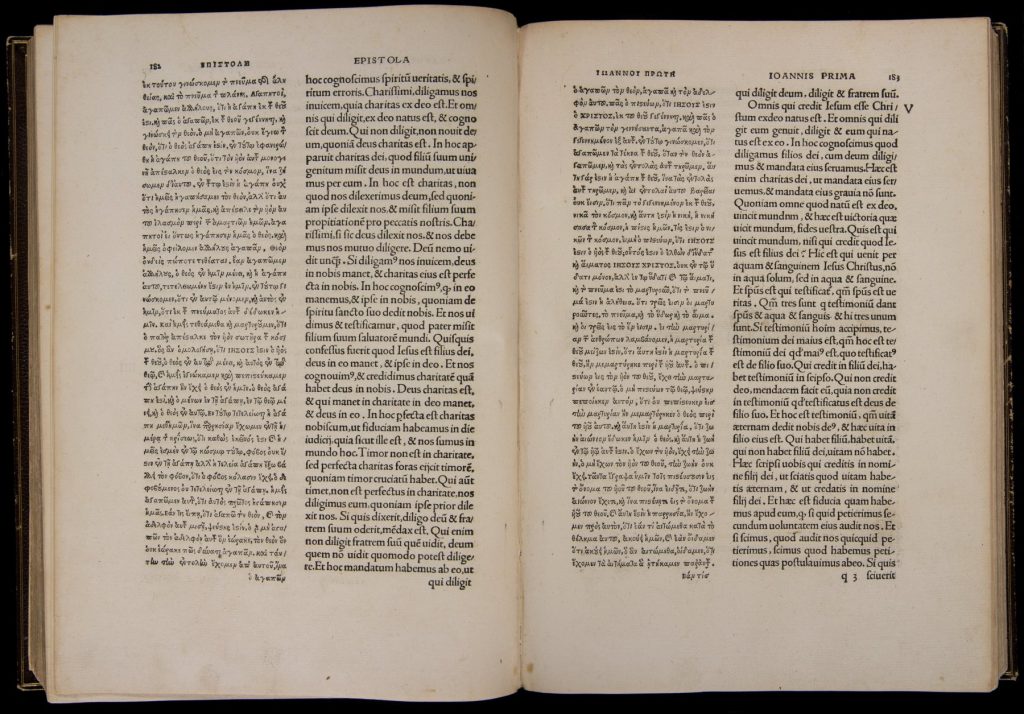
The images here are from Erasmus’s Praise of Folly, or Moriae encomium (published in 1511), often considered to be his finest work. Praise of Folly is written as a dialogue delivered by the personification of Folly, who takes the form of a woman and appears in a jester’s costume. She celebrates youth and pleasure, and she pokes fun at human pretensions as she points out life’s absurdities to the reader. (One of the reasons Erasmus wrote this book was to amuse his good friend, Thomas More.) Folly mocks a veritable laundry list of types of people, including authors, priests, doctors, and merchants, as well as many practices of the Church and princes.
Selection: Desiderius Erasmus, Praise of Folie, Title page, Sig. A4v, Sig. O2v, Sig. O3 (1549).
Translation of the above excerpt from Erasmus, Praise of Folly:
Now what shall I say about the courtiers? <For the most part> they’re the most obsequious, servile, stupid, and worthless of creatures, and yet they’re bent on appearing foremost in everything. There’s only one matter in which they have no pretensions: they’re quite happy to go around displaying the gold, jewels, purples, and all the other emblems of virtue and wisdom on their persons while leaving any interest in what these symbolize to others. They count themselves extremely fortunate to be permitted to call the king “Sire”, to know how to address him in three words, to pile up courtesy titles like “Serene Highness”, “your Lordship”, “your Majesty”, to shed all sense of shame and make themselves agreeable with flattery, for these are the skills becoming to a nobleman and courtier. But if you look more closely into their whole pattern of life you’ll find they’re no better than Phaeacians or “Penelope’s suitors” – you know the rest of the poem <which Echo can quote for you better than I can>. They sleep till midday, when a wretched little hired priest waiting at their bedside runs quickly through the mass before they’re hardly out of bed. Then they go to breakfast, which is scarcely over before there’s a summons to lunch. After that follow dice, draughts, fortune-telling, clowns, fools, whores, idle games, and dirty jokes, interspersed with one or two snacks. Then comes dinner, followed by a round of drinks, or more than one, you may be sure. In this way, hours, days, months, years, and centuries are frittered away without a moment’s boredom.
Erasmus, Praise of Folly, trans. Betty Radice (New York: Penguin Books, 1971), 106-107.
Questions to Consider:
- What — or who — is Folly? Why is she a jester? Why is she a woman? How does having Folly as the narrator benefit Erasmus as the author?
- Can you decipher any of what Folly says about princes and courtiers on the page “Sig. O2 verso” and “Sig. O3”? What do you notice about these pages and what’s on them?
- What about page “Sig. A4 verso/f. 8″: Who were Folly’s nurses? Who else does Folly reference here?
- What else do you notice about how this book was printed?
About the Author
Alexandra received her PhD in history from Northwestern University in 2018. She taught at NU both as a graduate student and as a postdoctoral teaching fellow. More recently, she offered courses on medieval and early modern Europe, Muslim-Christian relations, and heretics and outliers at Skidmore College, her alma mater, as a visiting assistant professor. Alexandra studies late-Renaissance politics and is working on an article. She also consults on projects with the Center for Renaissance Studies at the Newberry Library. She misses living in Chicago.

Lorenzo de’ Medici to the Duke of Milan, Gian Galeazzo Sforza (January 8, 1485) 
Marsilio Ficino, Il consiglio di M. Marsilio Ficino fiorentino contro la pestilentia, Title page (1556) 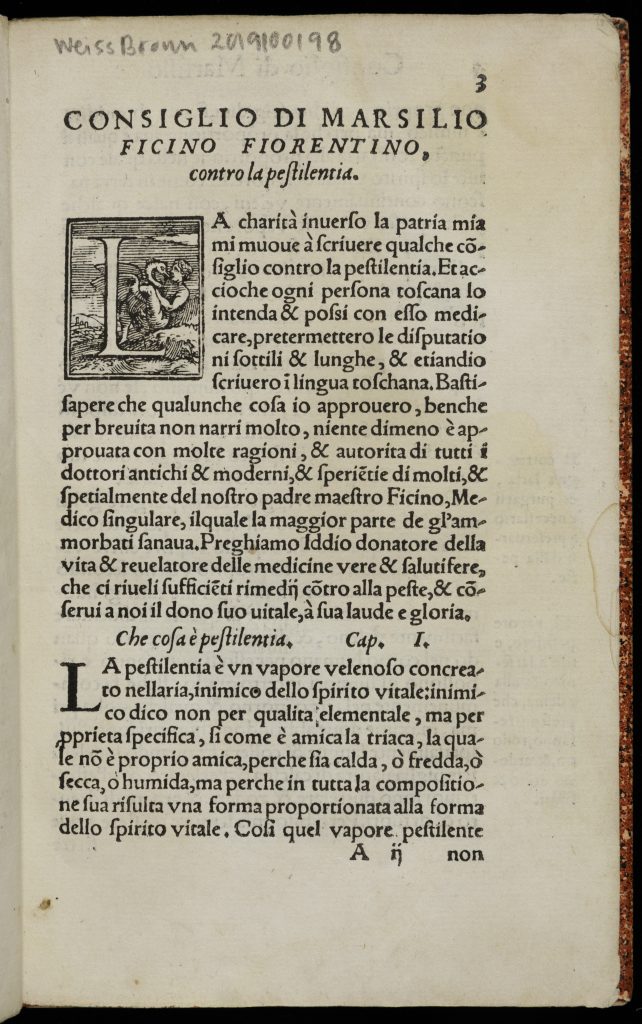
Marsilio Ficino, Il consiglio di M. Marsilio Ficino fiorentino contro la pestilentia, Folio 3r (1556) 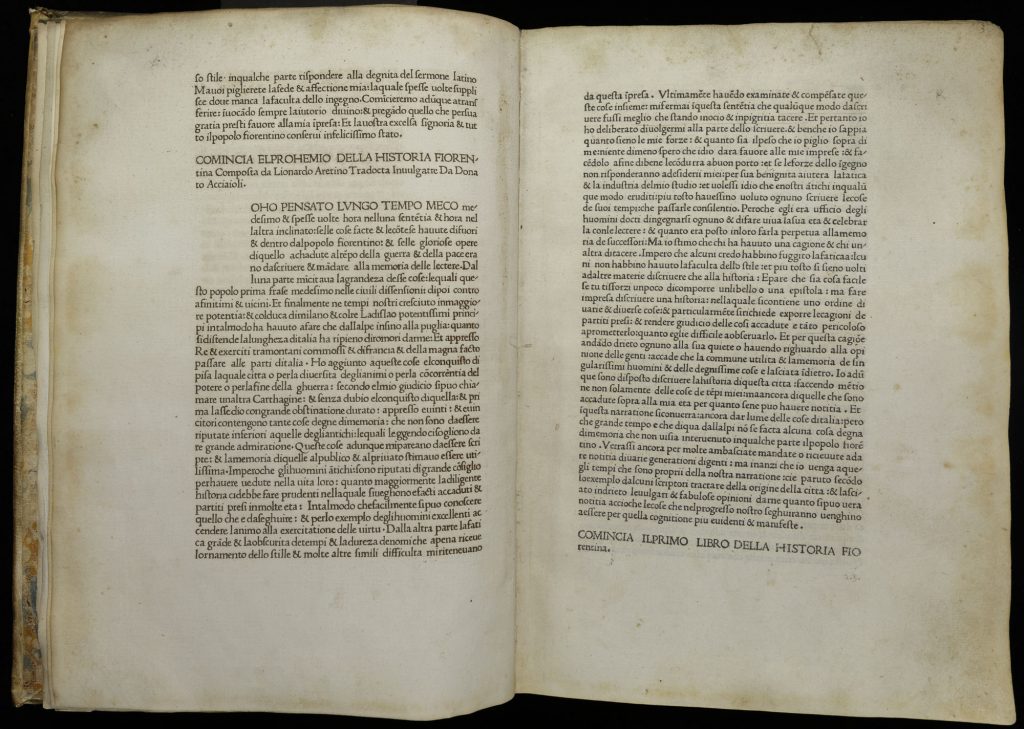
Leonardo Bruni, Historia Florentina, Folio 2v-3r (February 12, 1476) 
Baldassare Castiglione, Il libro del cortegiano del conte Baldesar Castiglione, title page (1539) 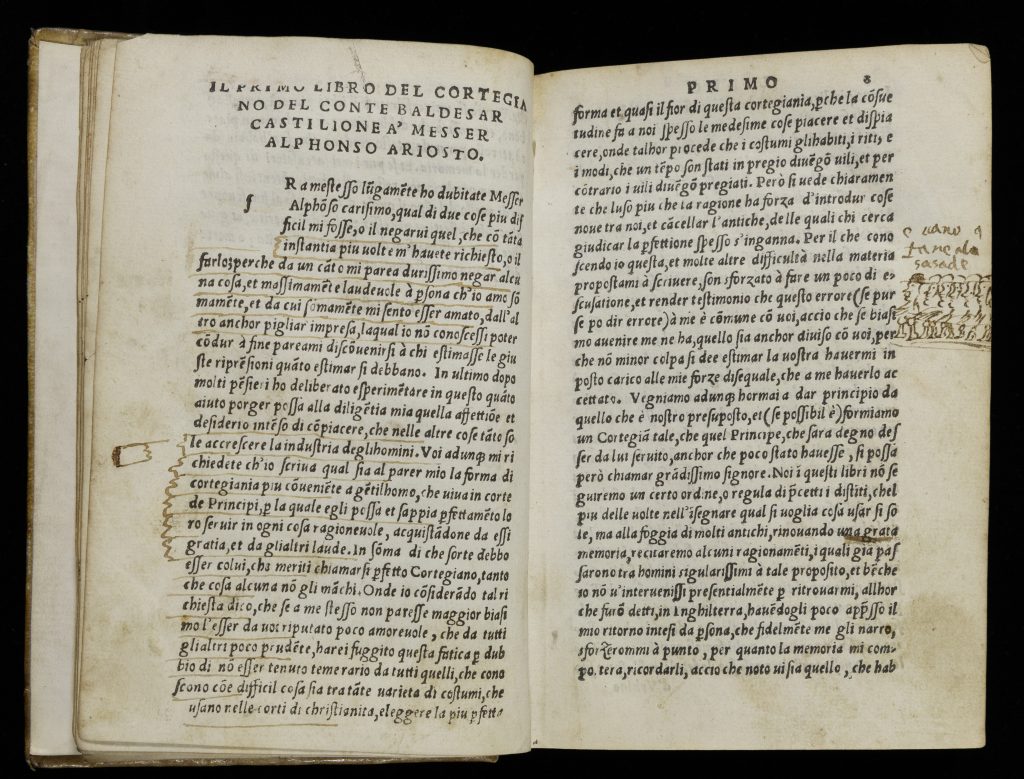
Baldassare Castiglione, Il libro del cortegiano del conte Baldesar Castiglione, Folio 7v-8r (1539) ![Two-page spread from an early printed book. The text is entirely in italics, tightly spaced, takes up most of the page. In the right-hand margin of the right page someone has written the following, "dai dai/deli sasa/de a sh [?]/bassoru." Below this is a drawing. A line of half circles runs the length of the margin, with their flat sides pointed down. The flat sides are the tops of boxes, with the vertical sides drawn where each semicircle meets the next. A mirror image of this pattern repeats below. In between the two are tight looping lines that might be script.](https://dcc.newberry.org/wp-content/uploads/2021/06/case_y712_c2738_folio_08v_09r-1-1024x779.jpg)
Baldassare Castiglione, Il libro del cortegiano del conte Baldesar Castiglione, Folio 8v-9r (1539) 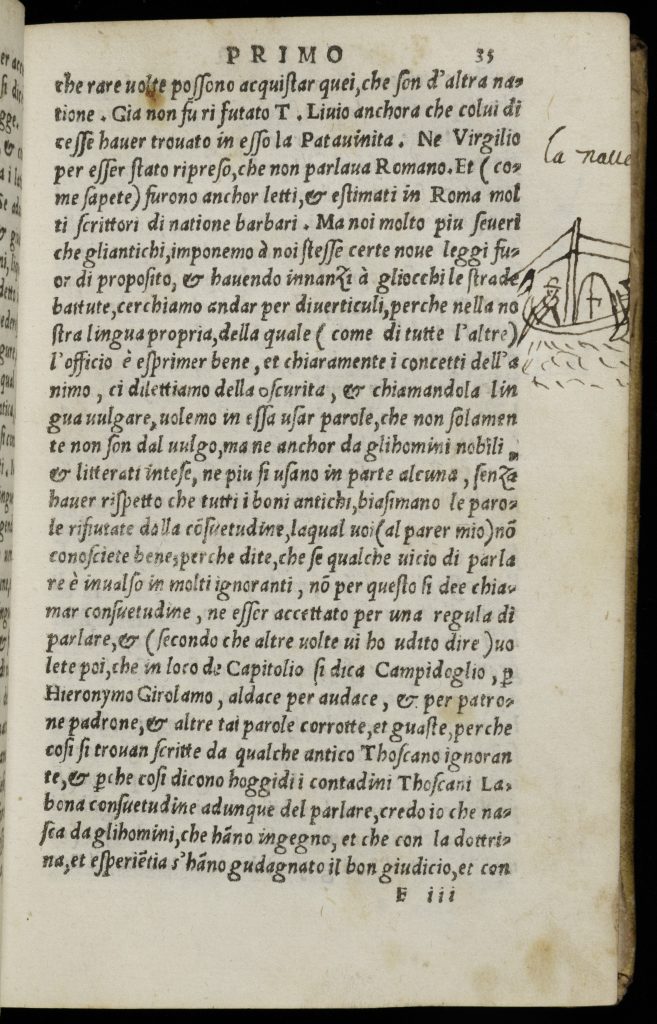
Baldassare Castiglione, Il libro del cortegiano del conte Baldesar Castiglione, Folio 35r (1539) 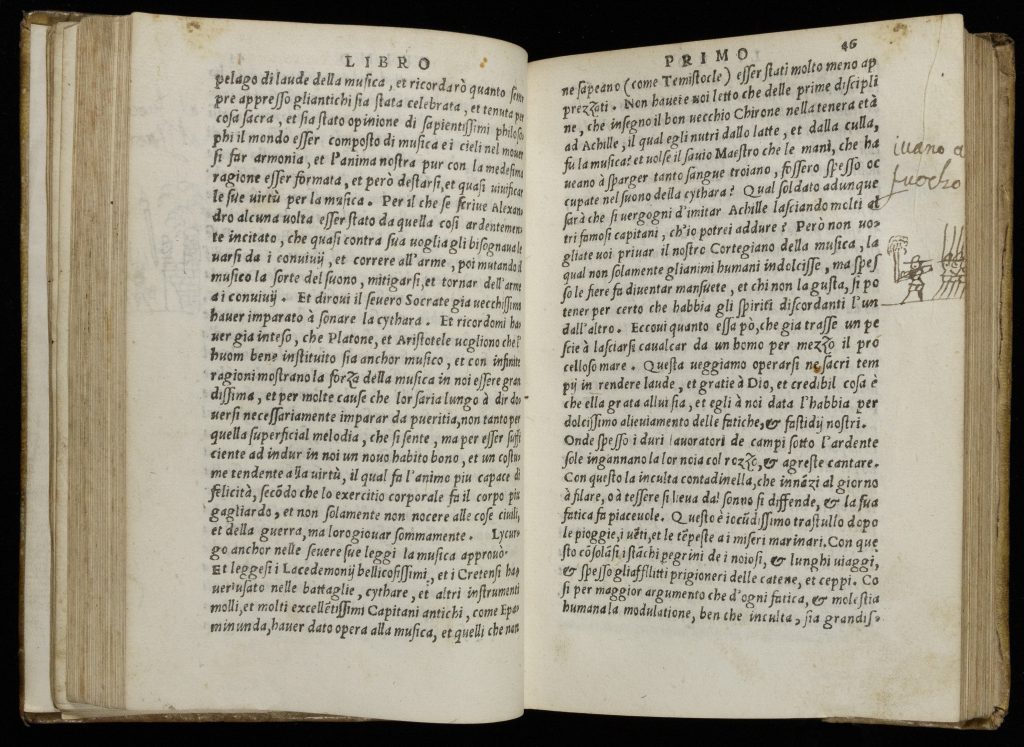
Baldassare Castiglione, Il libro del cortegiano del conte Baldesar Castiglione, Folio 45v-46r (1539) 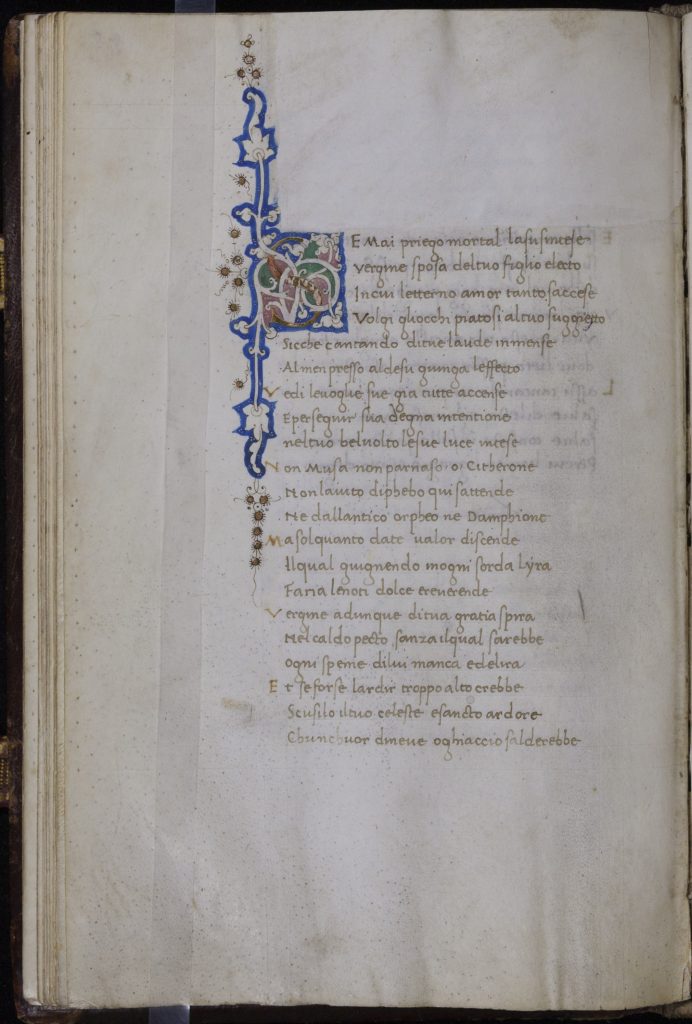
Humanistic Miscellany, Folio 35v (1450-1495) 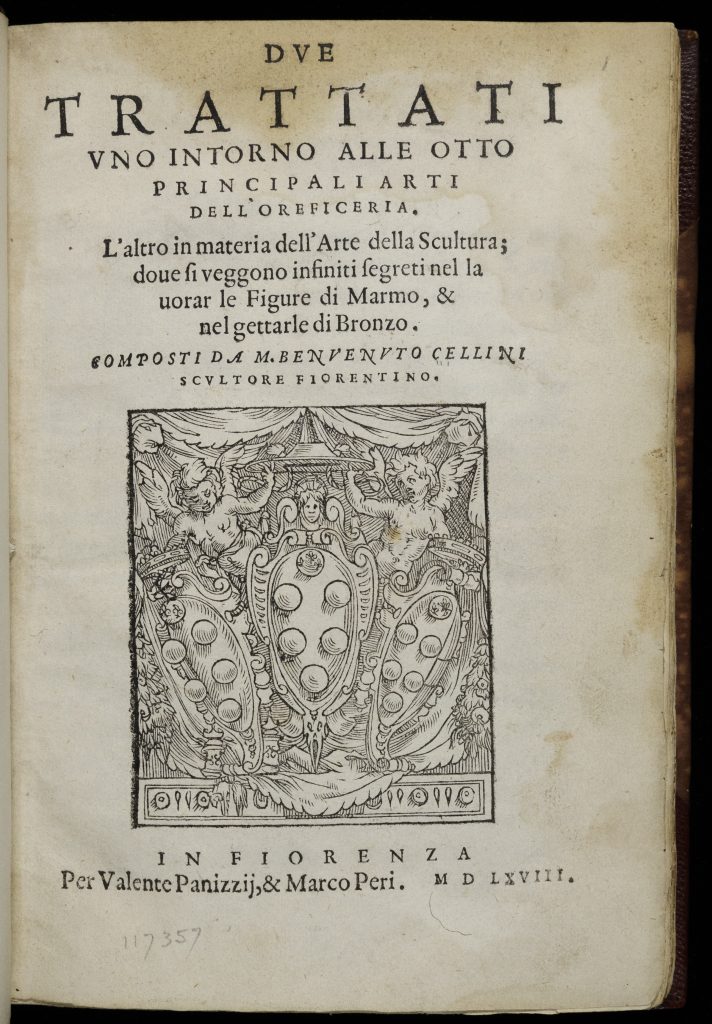
Benvenuto Cellini, Dve Trattai, title page (1568) 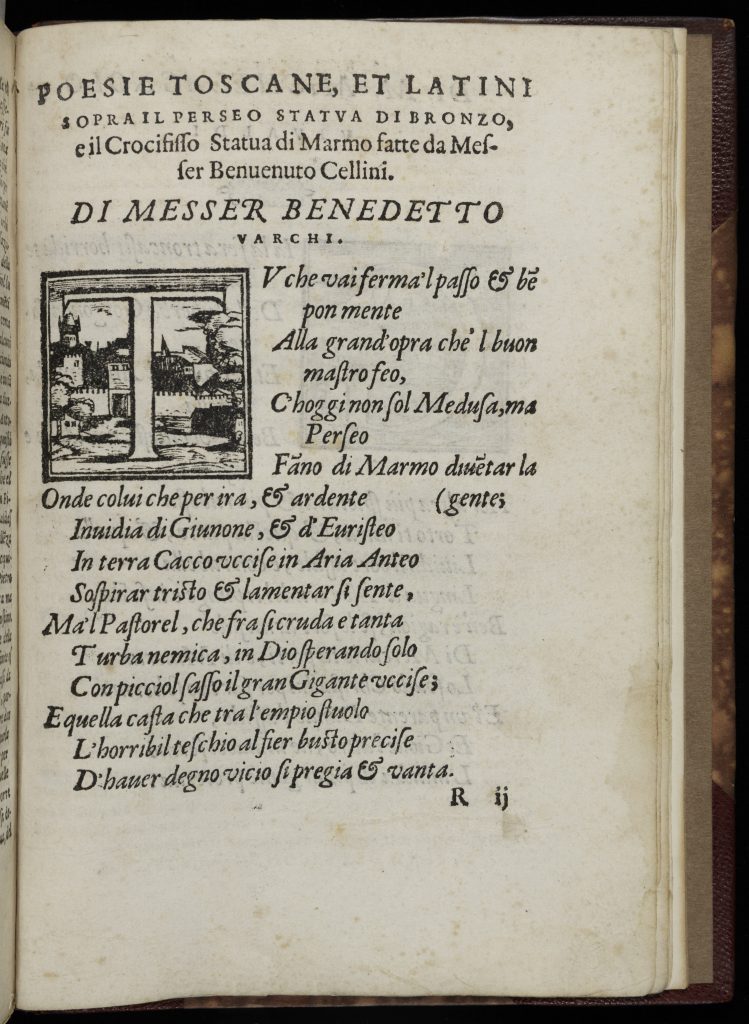
Benvenuto Cellini, Dve Trattai, Signature Rii (1568) 
Benvenuto Cellini, Dve Trattai, Folio 44v-45r (1568) 
Giovanni Pico della Mirandola, Disputationes contra astrologos, Folio 1r (August 14, 1498) 
Desiderius Erasmus, Annotationes in Novem Testamentum [Annotations in the New Testament], 182-183 (1516) 
Desiderius Erasmus, The Praise of Folie, Title page (1549) 
Desiderius Erasmus, The Praise of Folie, Signature A4 verso (1549) 
Desiderius Erasmus, The Praise of Folie, Signature o2 verso (1549) 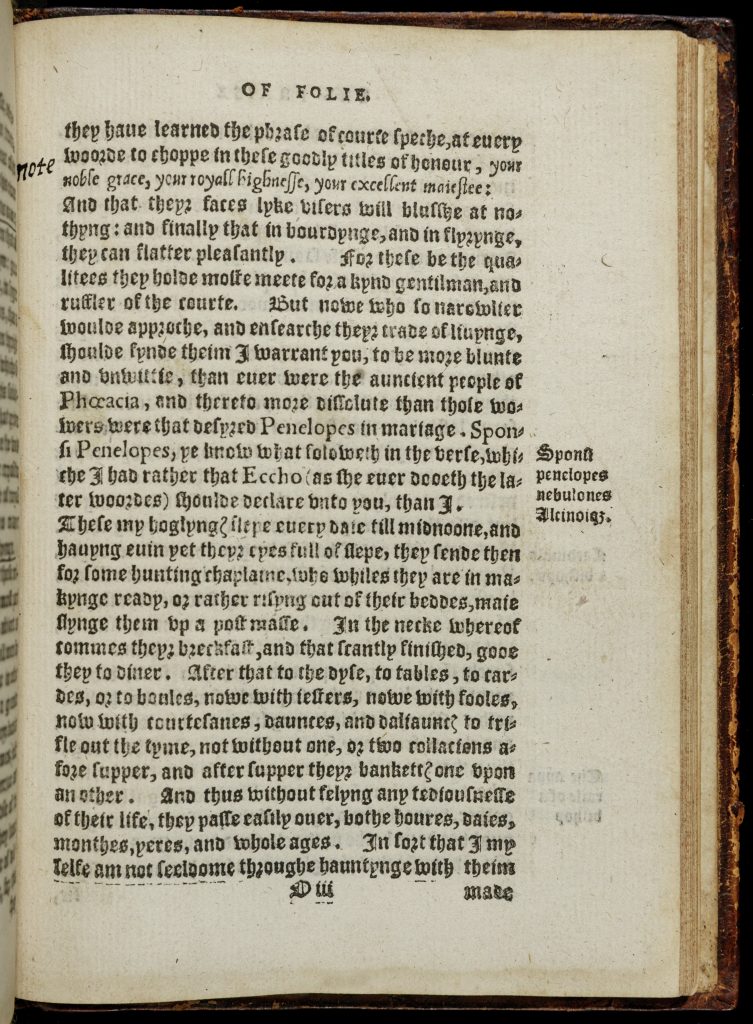
Desiderius Erasmus, The Praise of Folie, Signature o3 recto (1549)
For more on women humanists, see King’s Renaissance Humanism, Chapter 9, and A Short History of the Renaissance in Europe, Chapter Three (pg. 96-101).
Backman, Clifford R. The Worlds of Medieval Europe. New York: Oxford University Press, 2015.
Castiglione, Baldesar. The Book of the Courtier. Translated by George Bull. New York: Penguin Books, 1967.
Erasmus. Praise of Folly and Letter to Maarten Van Dorp 1515. Translated by Betty Radice. London: Penguin Group, 1971.
Garin, Eugeno. Italian Humanism: Philosophy and Civic Life in the Renaissance. Translated by Peter Munz. New York: Harper and Row, Publishers, 1965.
Hankins, James, ed. and trans. Leonardo Bruni: History of the Florentine People, Vol. I Books I-IV. Cambridge: Harvard University Press, 2001.
King, Margaret L., ed. and trans. Renaissance Humanism: An Anthology of Sources. Indianapolis: Hackett Publishing Company, Inc. 2014.
King, Margaret L., A Short History of the Renaissance in Europe. Toronto: University of Toronto Press. 2017.
Kristeller, Paul Oskar. Renaissance Concepts of Man And Other Essays. New York: Harper and Row, Publishers, 1972.
Levack, Brian, Edward Muir, and Meredith Veldman. The West: Encounters and Transformations, Volume B: From the Late Middle Ages to the French Revolution. 4th Edition. Boston: Pearson, 2014.
Martines, Lauro. Power and Imagination: City-States in Renaissance Italy. Baltimore: The Johns Hopkins University Press, 1979.
Najemy, John M. A History of Florence: 1200-1575. Chicester: Wiley-Blackwell, 2008.
Skinner, Quentin. The Foundations of Modern Political Thought, Volume 1: The Renaissance. Cambridge: Cambridge University Press, 1978.



